For a much more complete listing of weeds in the Park, see the link at the bottom of this page. In the meanwhile, the priority weeds for volunteers to target are discussed in more detail just below.
Priority weeds for volunteers to target in Trelissick Park
Wellington City Council carries out some weed control in Trelissick Park. However they need your help. There are a few weed species which are best controlled by hand as long as the job is done properly. This guide lists weeds in priority which you can help control and guidelines on the best way to do this.
There are other weeds in the park, less prevalent, some being controlled by Council contractors, e.g. mile a minute, evergreen buckthorn, cotoneaster, pampas, African clubmoss, Asiatic knotweed, gorse, daisy, boneseed, banana passionfruit, bay, pasture grass. At the moment, Darwin's barberry appears infrequently. However it has invaded many of the hillsides around Wellington and should be removed when found in the Park.
Remember if you see these weeds in the park and they look easy to control now, they soon won't be!
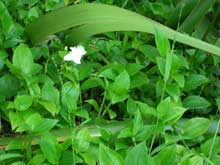
Tradescantia (Wandering Willie)
A spreading groundcover which does not seed in New Zealand. Instead this plant grows from stem fragments. This weed is an ecological nightmare because it spreads as a thick carpet, preventing seedling emergence. It also causes eczema in some dogs. Trelissick Park is well used by dog walkers and we would like to keep it that way. To clear tradescantia pull it out by hand or rake it into a compacted heap in the shade on the ground (for bacterial action). A black plastic covering stops spread from the heap. Otherwise, put all plant material into a rubbish sack and carry out for the landfill. Try to get all broken fragments and watch that you don't lose any into the stream (this will only spread the problem).
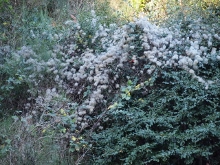
Old Man's Beard
This is becoming a serious problem in the park and adjoining areas. The flowers are easily spread by wind, so it is important to tackle this as soon as flowers appear, but before seeds are set early in the year. At this time, OMB is easy to spot, as the white flowers are conspicuous. It is useful to have another person to act as a 'spotter', because OMB is sometimes hard to find in the thick bush. Cut the vines at ground level and apply Vigilant or Triumph gel. Preferably pull down and bag the vines for landfill disposal. Make sure all the vines are cut - often hard to see in the surrounding scrub.
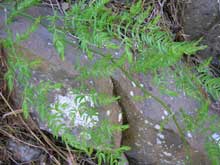
Climbing Asparagus
A nasty creeper which produces small white flowers in early summer, followed by orange berries which are spread by birds. The tubers must be removed. It should be bagged and remove for landfill disposal.
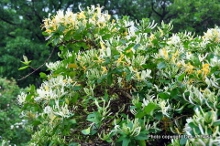
Japanese Honeysuckle
Most outbreaks have been controlled by Council contractors, but outbreaks and re-growth still occur. Small plants can be pulled out, otherwise cut at ground level and apply Vigilant or Triumph gel to the cut surfaces.
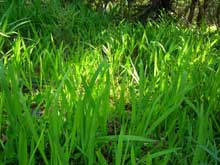
Montbretia
Forms thick clumps which inhibit seedling growth. Pull out by hand, but make sure you get the corms, which can be quite deep. If they don't all come out you can use a trowel or an old chisel to dig them up. Remove the corms from the park for landfill disposal.
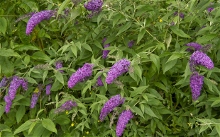
Buddleia
This shrub has attractive purple flowers and can 'take over' areas, if not removed. Pull out any seedlings you come across. For larger trees, cut at ground level and apply Vigilant or Triumph gel to the cut surface.
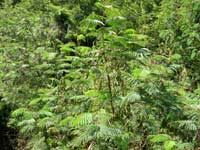
Wattle
Wattle is an evergreen shrub/tree, which establishes quickly and displaces native plants. Small wattle seedlings are widespread in the lower part of the park. Pull these out by hand and expose to the sun. Wattle seeds stay dormant in the soil for years, so this will be an ongoing task Larger wattle trees can be cut to kill them. They do not need poison.
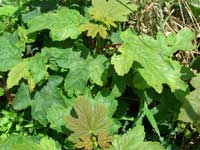
Sycamore
Sycamore is a large deciduous tree which produces 'helicopter seeds' that are efficiently dispersed by wind. Pull out any seedlings you come across. For larger trees, cut at ground level and apply Vigilant or Triumph gel to the cut surface. They are readily spotted by their orange leaf display in autumn.
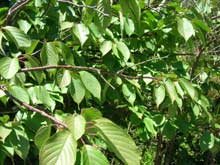
Flowering Cherry (Cherry)
Large deciduous trees, quickly distributed by birds. Pull out any seedlings you come across. For larger trees, cut at ground level and apply Vigilant or Triumph gel to the cut surface. They are readily spotted by their orange leaf display in autumn.
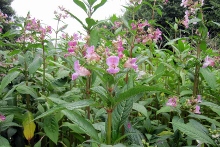
Himalayan Balsam
After concerted efforts over recent years, this has largely been eliminated from Trelissick Park streamside areas. However, it can reinvade from seeds carried down from upstream. It is best pulled out before flowering/seeding.
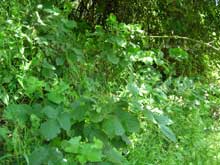
Blackberry
Outbreaks can be grubbed out. Otherwise, it can be lopped off at ground level to give other plants a chance to take over.

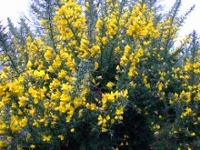
Broom and Gorse
These two yellow flowered shrubs are regular intruders into the Park. Broom can be pulled out or cut and left on the ground to rot. Poison is not needed.
Gorse is more prickly and also more difficult to eliminate - needing Vigilant or Triumph gel to poison the cut surfaces.
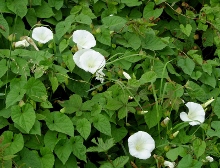
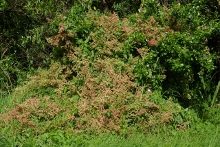

Convolvulus (Bindweed), Climbing Dock, Ivy
These vines climb up and envelop young plants, every summer. Cut away the vines and free the plants. Climbing Dock and ivy should be bagged and taken out for the landfill. Climbing Dock is especially hard to control - with large tubers underground. Where time permits, these tubers should be removed from the ground and from the Park.
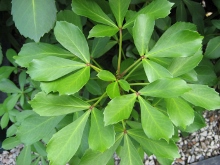
Coastal Five Finger
There is concern about the spread of Houpara or coastal five-finger (Pseudopanax lessonii). This is indigenous in northern New Zealand but hybridises with Lancewood (Pseudopanax crassifolius). We are trying to rid the park of these invasive hybrids. Pull out or cut out any that you find.
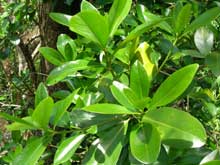
Karaka
A native tree which is probably not endemic to the Wellington region. It may replace the native vegetation of an area through aggressive regeneration - especially areas recently cleared of tradescantia. For this reason we encourage you to pull out karaka seedlings if they are beginning to form a dense grove. This plant does supply fruit for kereru and other birds so will not be completely removed.
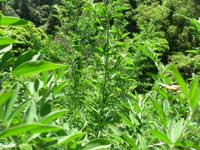
Tree Lucerne
Planted in the park historically to attract birds. We are leaving the larger trees, for this reason, but pull out or cut any spread of smaller tree lucerne.
Remember to keep piles of weeds clear of the track, and out of the flood zone. If weeds end up in the stream they spread downstream.
Like many of Wellington's parks and reserves, a common source of destructive weeds in Trelissick Park is from people dumping their green-waste. Please don't contribute to the problem and dispose of your green-waste thoughtfully.
The other important source of invasive weeds is plants escaping from gardens and growing wild over the back fence. If you live near a reserve such as Trelissick Park, please have a look in your garden and have a think about plants that may become potential weeds in the future. It doesn't take much for a fast-growing climber to spread seed and escape into the native bush beyond your garden.
More Weeds
A much more complete listing of Trelissick Park weeds is contained in the following document.
And Even More Weeds!
The current listing of 135 pest plants (weeds) identified by MPI for NZ is contained in the following link. The link contains access to an on-line listing of the pest plants and descriptions of each plant - and is referred to as the National Pest Plant Accord.
Trelissick Park Group
Page last updated: 14 May 2023

